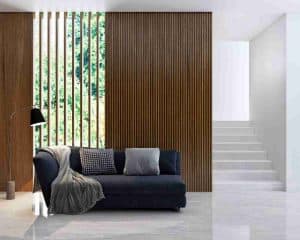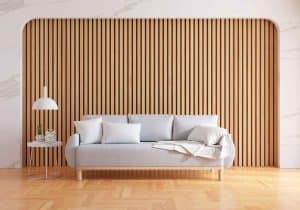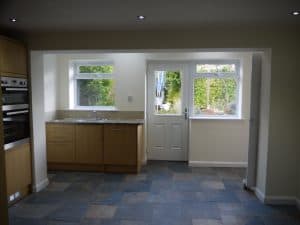What is Cladding?
The term cladding is referred to as a wall’s external layer. It is one of the popular choices of homeowners for new build houses and house renovation projects. It often comes in pre-fabricated panels that can be directly attached or nailed on to timber battens for installation at a building’s specific part or entire structure.
It makes the wall covering long-lasting, provides a protective layer against different elements, adds thermal insulation, and enhances the aesthetic appeal of a property.
This article includes the uses and types of cladding its aftercare requirements, safety regulations, Planning Permission requirements, and disposal of old cladding.
What Are the Uses of Cladding?
Offering versatile solutions, cladding can be installed in bathrooms, kitchens, and wet rooms to make the internal surfaces waterproof. It is one of the cost-efficient ways of making your property’s surfaces easy to clean, requiring low maintenance with added thermal insulation and improved appearance.
How Many Types of Cladding Are There?
Cladding comes in different board shapes and styles and is made of different kinds of materials, such as:
Metal Cladding
Treated metals, such as aluminium, steel, and zinc are mainly used for making cladding panels as they require low maintenance and help to create a unique design. This type of cladding has high embodied carbon content because of fabrication; that’s why it is long-lasting. It can be installed in diagonal, horizontal, or vertical patterns per your preferences, with added strength and surface protection. It is also resistant to corrosion, does not flake away or rust with time, and can be easily moulded into different shapes to accommodate unique designs of building structures.

PVC Cladding
Polyvinyl Chloride (PVC) cladding is a durable and long-lasting cladding with low maintenance requirements. It is available in different colours, ranging from plain white to blue, green, black, and grey. Various finishes can be achieved by installing this type of cladding, such as a smooth woodgrain finish with a textured wood effect.

Stone Cladding
Different stones, such as natural stone and limestone, are used to make these cladding panels. Limestone cladding adds a sense of permanence to the building surfaces but is comparatively expensive. Therefore, you can install it in a particular building section rather than over the entire façade. On the other hand, natural stone makes the building surfaces strong, hardwearing, long-lasting, breathable and permeable, avoiding moisture build-up in the building.

Timber Cladding
Timber cladding is installed by attaching the board panels in horizontal directions, making it a popular choice to be used in contrast with silver timber cladding to add a contemporary look. Naturally occurring timber materials, including cedar, larch, and oak, require low maintenance and make the building surfaces durable by adding weather resilience.

What Are the Requirements Associated with Cladding?
Aftercare Requirements
Some types of cladding require regular oiling or waxing to maintain their appearance and weather resistance, such as timber cladding. However, PVC cladding requires low maintenance after installation as it is resilient to wear and tear. It can be easily cleaned with soap and water.
Safety Regulations Requirements
There are different health and safety concerns related to cladding installation. It is imperative to ensure compliance with The Work at Height Regulations 2005 if the cladding is installed above a property’s ground floor. Complying with these regulations helps to avoid all the potential risks by taking the required precautionary measures in advance.
Planning Permission Requirements
Planning Permission approval is not required if you intend to clad your house or re-clad it by replacing the previously installed cladding material. You do not need to apply for Planning Permission for repairs, maintenance, and minor improvements if the cladding involves the use of the same materials as used in the rest of the property.
However, this approval is required for cladding installation if your property is a listed building or is located on specially protected land types, such as a National Park.

How to Dispose of Old Cladding?
Removing and disposing of the old cladding properly before installing a new cladding at your property is essential. The older cladding may contain harmful materials, including asbestos, which are categorised as hazardous waste and require proper disposal compared to the new panels made of PVC. Therefore, seeking professional advice to undertake a suitable disposal method to avoid negative environmental impacts is crucial.
Conclusion
Cladding enhances the grace of your property by changing its overall appearance; therefore, selecting the correct type of cladding is essential. For this purpose, you should consider the factors of resilience, aesthetics, and maintenance requirements before selecting a particular type of cladding material to make your property surfaces long-lasting and look the best. Moreover, you should also consider your budget in this regard.







